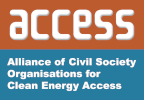Difference between revisions of "Transparency as Precondition for Reforming Subsidies"
***** (***** | *****) (New page: Add Your Content Here Category:Financing, promotion schemes and subsidies) |
***** (***** | *****) |
||
| Line 1: | Line 1: | ||
| − | + | '''<font face="TradeGothic-Bold" size="4"><font face="TradeGothic-Bold" size="4"></font></font><font face="TradeGothic" size="2"><font face="TradeGothic" size="2"></font></font><font face="TradeGothic" size="1"><font face="TradeGothic" size="1">4</font></font><font face="TradeGothic" size="2"><font face="TradeGothic" size="2">Publicizing information on subsidies</font></font> | |
| + | |||
| + | ''' | ||
| + | |||
| + | Transparency as a foundation for reform | ||
| + | |||
| + | |||
| + | |||
| + | Transparency can influence reform in at least four ways (Hale, 2008): | ||
| + | |||
| + | 1. by institutionalizing public discourse: the act of disclosure starts a dialogue between the discloser and | ||
| + | |||
| + | interested parties; | ||
| + | |||
| + | 2. by compelling actors to tell the truth, making it difficult for discourse to be manipulated by one “loud,” | ||
| + | |||
| + | deceitful actor; | ||
| + | |||
| + | 3. by cutting through the flood of information and often contradictory claims to focus attention on facts; | ||
| + | |||
| + | and | ||
| + | |||
| + | 4. by promoting self-reflection within the organization or government, compelling actors to comply with | ||
| + | |||
| + | their own standards and norms. | ||
| + | |||
| + | In considering the extent to which improving transparency could assist reform, the key consideration appears | ||
| + | |||
| + | to be one of ensuring its relevance. For transparency to be useful, information users and providers must desire | ||
| + | |||
| + | disclosure of the information and see how such transparency can help meet their objectives. | ||
| + | |||
| + | Improved information about fossil-fuel subsidies, in particular, can help governments meet their reform | ||
| + | |||
| + | objectives. At the simplest level, information about the subsidy and its effects facilitates an assessment of its | ||
| + | |||
| + | costs and benefits and, therefore, of the implications of reform. Making this information publicly available | ||
| + | |||
| + | increases awareness of the effects of existing policies and allows public input to decision-making (Wolfe and | ||
| + | |||
| + | Helmer, 2007). | ||
| + | |||
| + | Many governments understand the economic, social and environmental problems created by subsidies, but | ||
| + | |||
| + | are under political pressure to maintain them. Transparency can expose those winners and losers created by | ||
| + | |||
| + | subsidies and therefore help to broaden support for reform (Victor, 2009). | ||
| + | |||
| + | |||
| + | |||
| + | |||
| + | |||
| + | |||
| + | |||
| + | |||
| + | |||
| + | can lead to pressure from other industries seeking to level the playing field between competing sectors. | ||
[[Category:Financing, promotion schemes and subsidies]] | [[Category:Financing, promotion schemes and subsidies]] | ||
Revision as of 14:08, 22 April 2010
4Publicizing information on subsidies
Transparency as a foundation for reform
Transparency can influence reform in at least four ways (Hale, 2008):
1. by institutionalizing public discourse: the act of disclosure starts a dialogue between the discloser and
interested parties;
2. by compelling actors to tell the truth, making it difficult for discourse to be manipulated by one “loud,”
deceitful actor;
3. by cutting through the flood of information and often contradictory claims to focus attention on facts;
and
4. by promoting self-reflection within the organization or government, compelling actors to comply with
their own standards and norms.
In considering the extent to which improving transparency could assist reform, the key consideration appears
to be one of ensuring its relevance. For transparency to be useful, information users and providers must desire
disclosure of the information and see how such transparency can help meet their objectives.
Improved information about fossil-fuel subsidies, in particular, can help governments meet their reform
objectives. At the simplest level, information about the subsidy and its effects facilitates an assessment of its
costs and benefits and, therefore, of the implications of reform. Making this information publicly available
increases awareness of the effects of existing policies and allows public input to decision-making (Wolfe and
Helmer, 2007).
Many governments understand the economic, social and environmental problems created by subsidies, but
are under political pressure to maintain them. Transparency can expose those winners and losers created by
subsidies and therefore help to broaden support for reform (Victor, 2009).
can lead to pressure from other industries seeking to level the playing field between competing sectors.



















